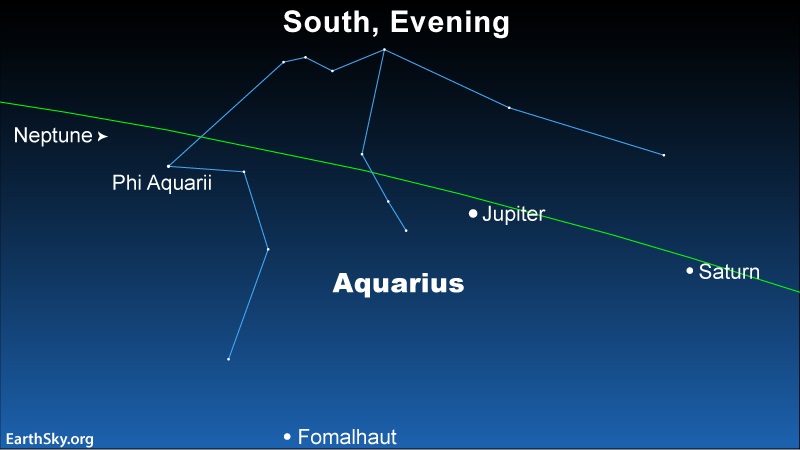
Neptune at opposition in 2021
In 2021, Neptune reaches opposition on September 14 at about 09:00 UTC. That’s when Earth is flying between the sun and Neptune, placing this outer world 180 degrees from the sun – opposite the sun – in our sky. Opposition marks the middle of the best time of year to observe an outer planet. The planet rises in the east as the sun sets in the west and is visible throughout the night.
Neptune’s 2021 opposition takes place in front of the constellation Aquarius the Water Bearer.
Neptune is the eighth planet from our sun. A year on Neptune is 165 Earth-years long. Because Neptune’s orbit around the sun is so gigantic, and because Earth whips around the sun so quickly in comparison, Neptune’s opposition date comes only a few days later each year. Thus:
In 2020, Neptune’s opposition was September 11.
In 2021, Neptune’s opposition is September 14.
In 2022, Neptune’s opposition will be September 16.
In 2023, Neptune’s opposition will be September 19.
In 2024, Neptune’s opposition will be September 20.
Around these opposition dates, Earth and Neptune are generally closest. In 2021, Earth and Neptune come closest for the year the day before opposition, on September 13. If Earth and Neptune both orbited the sun in perfect circles and on the same plane, then Neptune would be closest to Earth at opposition. But, in 2021, Earth comes closest to Neptune about 20 hours before opposition. By the time opposition rolls around, Earth is a bit closer to the sun (and, therefore, farther from Neptune).
As we come closest to Neptune for the year, we don’t mean close. At opposition, Neptune’s distance is about approximately 2.7 billion miles (4.3 billion km). Visit Heavens-above to know Neptune’s present distance in astronomical units.
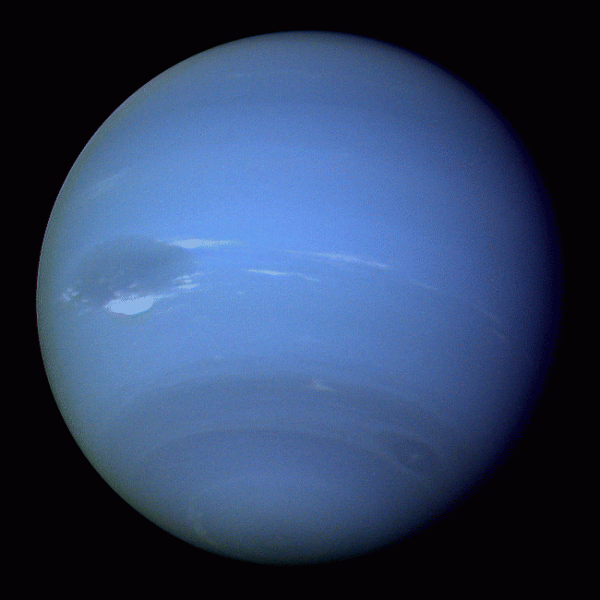
You need optical aid to see Neptune
Planets are brightest when at opposition. But Neptune, the eighth planet, is never truly bright. It’s the only major solar system planet that’s never visible to the unaided eye. This world is about five times fainter than the dimmest star you can see on a moonless night under dark skies. You’ll need binoculars or a telescope for Neptune, plus a detailed sky chart.
Because we’re more or less between Neptune and the sun around now, Neptune is rising in the east around the time of sunset, climbing highest up for the night around midnight and setting in the west around sunrise. As viewed from Earth now, this world is in front of the constellation Aquarius the Water Bearer, rather close to the 4th-magnitude star Phi Aquarii.
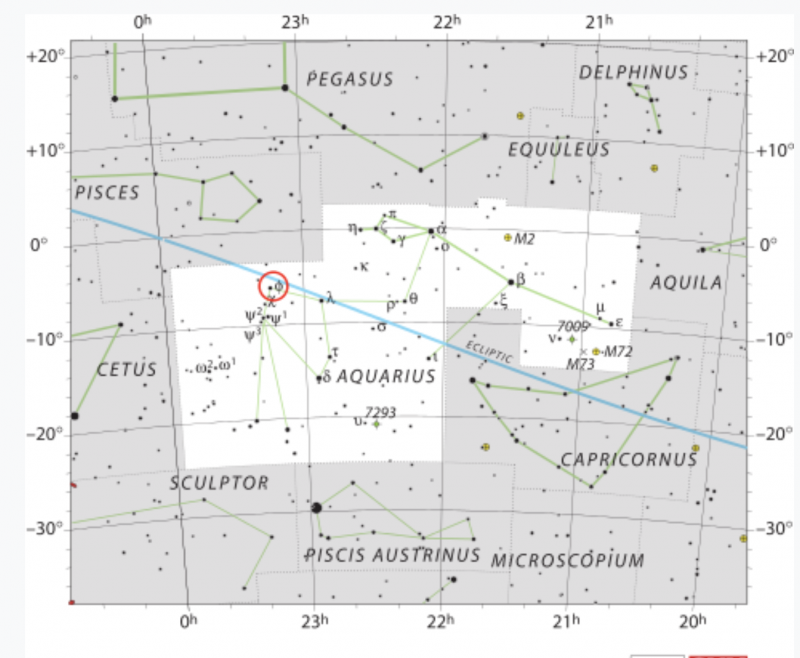
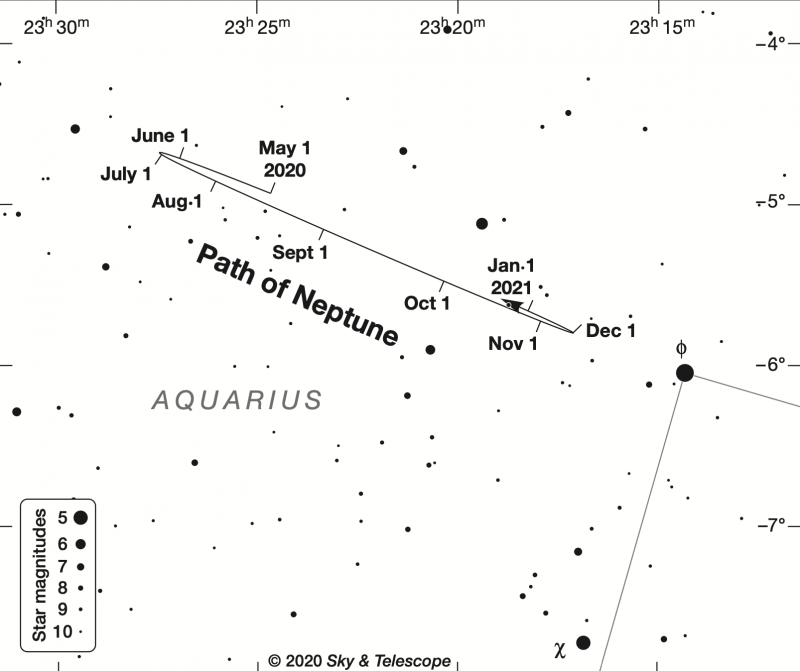
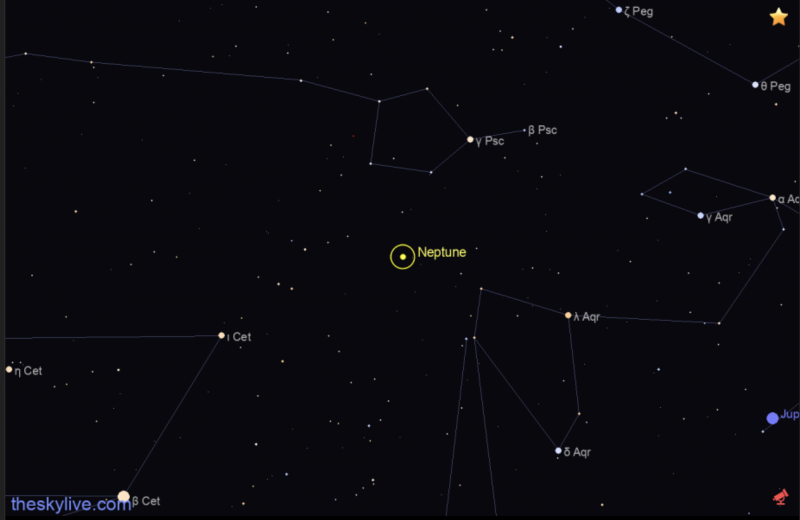
Neptune near Phi Aquarii on sky’s dome
Phi Aquarii, though faint, is easily visible to the eye alone on a dark night. Because the moon is now at or near first quarter phase, the moon-free viewing hours start around midnight.
Find out when the moon sets in your sky at Old Farmer’s Almanac (U.S. and Canada) or timeanddate.com (worldwide).
Neptune and Phi Aquarii are close together on the sky’s dome and the two should fit within a single binocular field. Neptune is nearly 30 times fainter than the star Phi Aquarii. However, a handful of faint stars will probably pop out into your binocular field. Neptune will be closely paired with the star HR 8924, and the twosome can be viewed in the same field of view through a low-powered telescope. Neptune is only about 1/4 the brightness of this 6th-magnitude star. A good sky chart goes a long way in any Neptune quest.
Even with an optical aid, Neptune may look like a faint star. You need to magnify Neptune by about 200 times and have a steady night of seeing to view this distant world as a small disk.
Bottom line: Neptune’s opposition – when it’s 180 degrees from the sun on the sky’s dome – comes on September 14, 2021. You need optical aid to spot it. Links to charts here.
See also: Geocentric Ephemeris for Sun: 2021
See also: Geocentric Ephemeris for Neptune: 2021
Read more: EarthSky’s guide to the bright planets
The post Neptune at opposition September 14, 2021 first appeared on EarthSky.
0 Commentaires